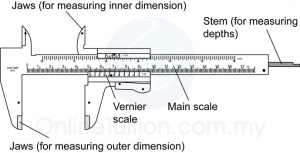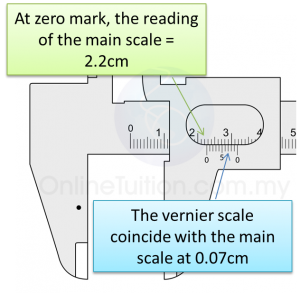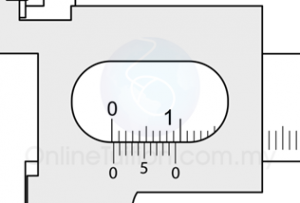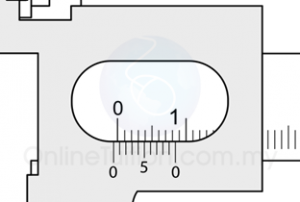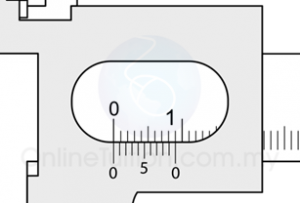- Vernier calliper is a measuring tool used to measure length.
- It is more accurate than the metre rule. It can measure the length with an accuracy up to 0.01cm.
- The figure above shows the illustration of a vernier calliper. For SPM students, you need to remember the name of the parts and the function of the 2 jaws and the stem.
Taking Reading from a Vernier Calipers:
- A vernier calliper has 2 scales, namely the main scale and the vernier scale.
- The main scale is read at the zero mark of the Vernier scale.
- The vernier scale is read at the point where it’s scale coincide with the main scale.
- Reading of Vernier calliper = Reading of main scale + reading of vernier scale.
- The vernier scale is 9mm long, divided into 10 divisions.
Example:
Reading of main scale = 2.2cm
Reading of vernier scale = 0.07cm
Reading of the vernier calliper = 2.27cm
Zero Error of Vernier Caliper
- The zero error is determined by tightening the jaws of the vernier callipers.
- Zero error must be eliminated from the reading.
Actual Reading = Reading of Vernier Caliper – Zero Error
Example:
Images below show the reading of 3 vernier callipers when their jaws are tightly closed. Find the zero error of each calliper.
a.
Zero error = 0.02 cm
b.
Zero error = -0.06cm
c.
Zero error = 0 cm (No zero error)
External Link

